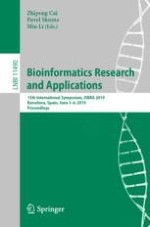2019 | OriginalPaper | Buchkapitel
Automated Hub-Protein Detection via a New Fused Similarity Measure-Based Multi-objective Clustering Framework
verfasst von : Sudipta Acharya, Laizhong Cui, Yi Pan
Erschienen in: Bioinformatics Research and Applications
Aktivieren Sie unsere intelligente Suche, um passende Fachinhalte oder Patente zu finden.
Wählen Sie Textabschnitte aus um mit Künstlicher Intelligenz passenden Patente zu finden. powered by
Markieren Sie Textabschnitte, um KI-gestützt weitere passende Inhalte zu finden. powered by
